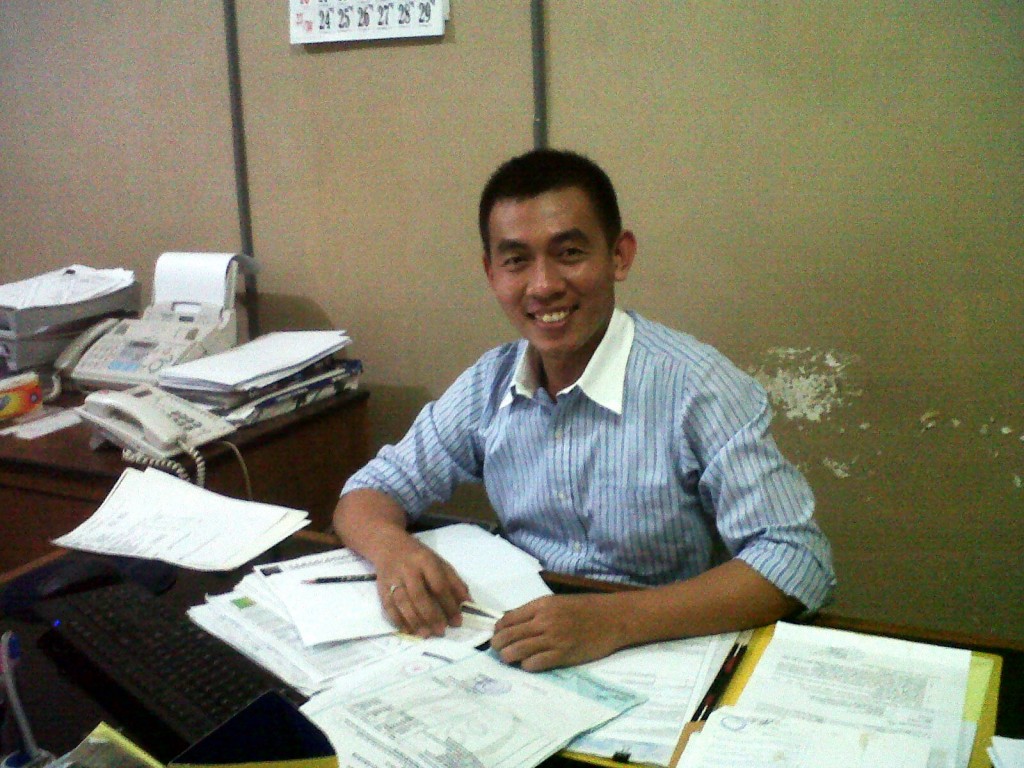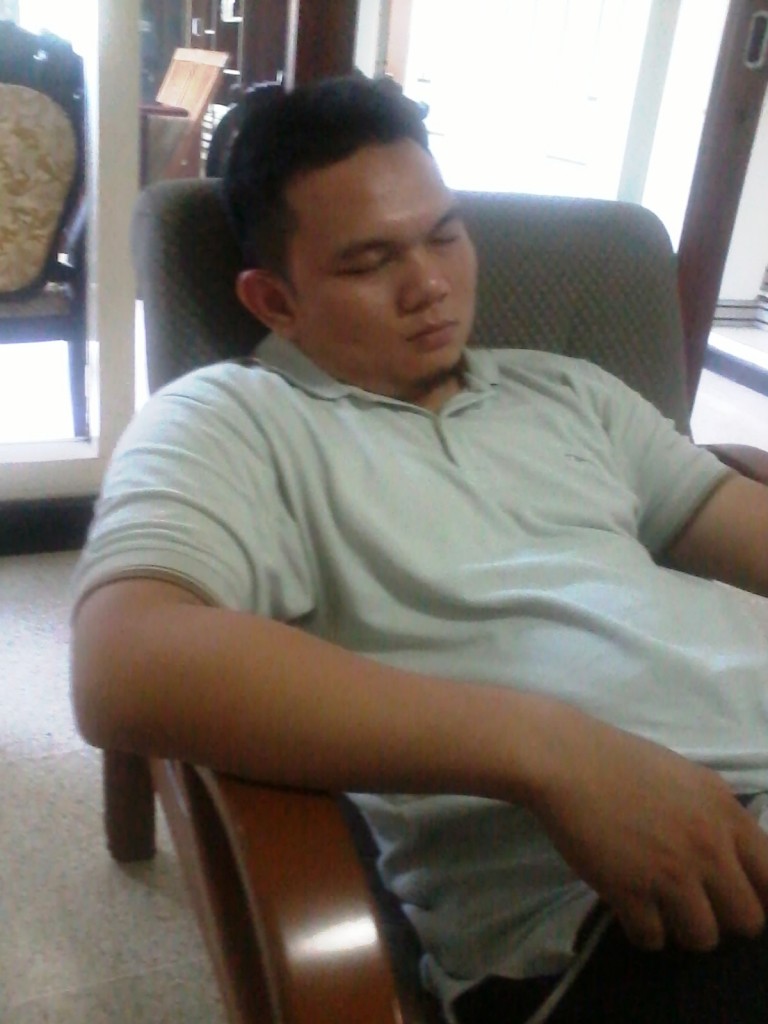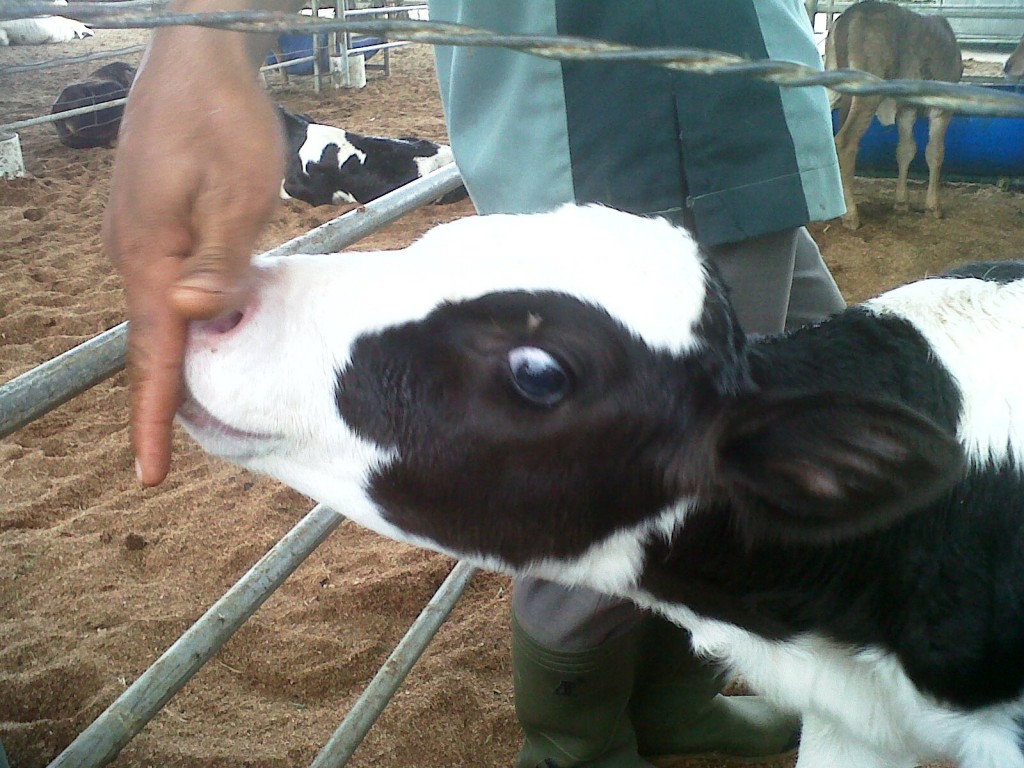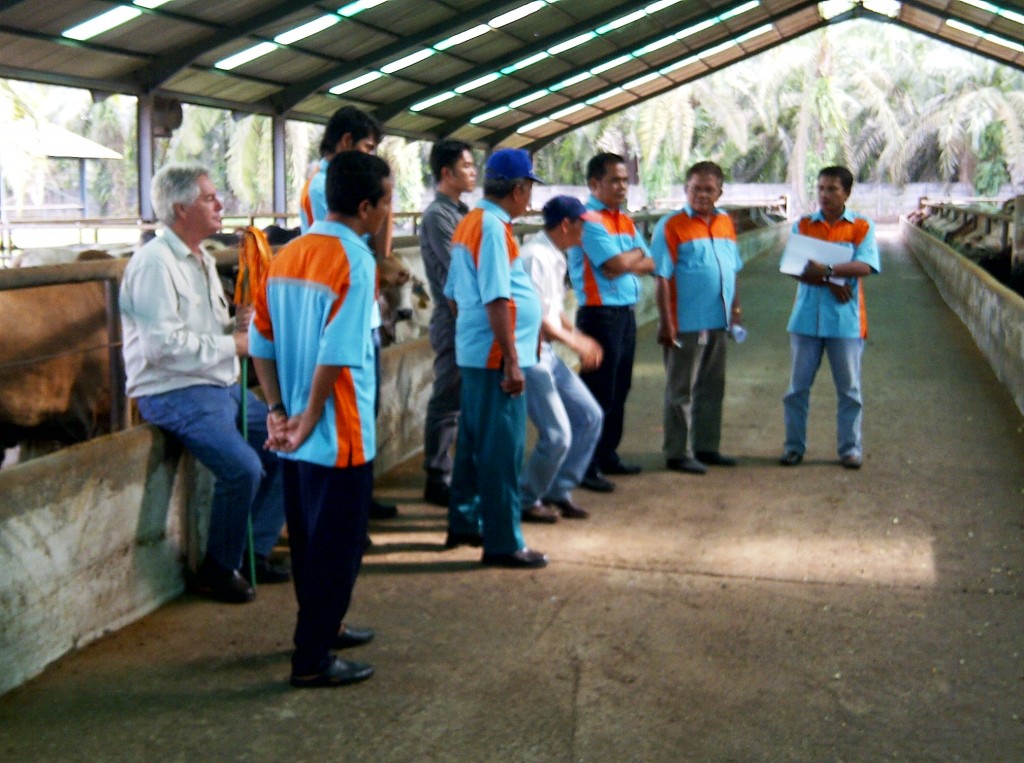The Import Process
Host: Lisa Wood/ AGP Indonesia
Written by Lisa Wood – Traceability Officer, AGP.
Today is a day where I’m not going to show you any cows. Today is about some of the people behind the scenes. Let’s face it, without people we cannot put systems in place that result in positive animal welfare outcomes.
Without further ado, I’d like to introduce some of the team: Thama, he’s the main man when it comes to the importing cattle paperwork and Oka, who help keeps Indo government happy and does lots of other odd admin jobs (like co-coordinating with the auditors). Over the coming week I’ll be introducing you to more of the people that help make all this possible.
 This is Thama at his desk, in the middle of preparations for the next shipment.
This is Thama at his desk, in the middle of preparations for the next shipment.
Thama:
The first step is to prepare the quota letter based on Indonesian government approval for the import of feeder cattle to our exporter. This is then sent to the exporter. They cannot sell us more cattle than we have approval to receive.
Next job is to make the schedule for cattle importation. This includes the quantities of heifers and or steers. The cattle must be over 300kg but less than 350kg per head; the actual loading date and the sail date. It is very important that we communicate and work with the exporter about the import schedule – loading in Australia and the import documentation required by us, like the Bill of Loading and the Health Certificate, that shows that the cattle have been vaccinated and declared healthy by an AQIS (Australian Quarantine Inspection Service) vet before departure from Australia.
When this is finished, I must start to prepare for customs clearance in Indonesia.
- Get the unloading approval from customs
- Completing customs duty & port authority
- Get permit from Animal Quarantine Centres
- Prepare Stevedoring for cattle unloading. They must know how many cattle we will import for preparing the trucks needed.
- Mobilisation of cattle to the feedlot
This is a very busy time of going to different government offices to make sure everything is in order before the cattle get here. All our documents must be ready and complete as, of course, we must follow the government regulations. This takes about two weeks to complete.
Shipping times from Australia is about five days to Bandar Lampung and six days to Medan. Everything must be in order before the cattle get here, so we can get them off the ship and into the feedlot as quickly and as safely as possible.
When the ship arrives, I must give copies of all the documents to the ship’s Captain as endorsement that he is allowed to offload the cattle.
After all the cattle are offloaded and safely at the feedlot the quarantine period starts, this is two weeks long. The quarantine officers and the customs officers come to the feedlot to check on the cattle.
During the unloading of the cattle, Oka will be at the ship and the feedlot with the auditors. Even though we have technically completed our five Performance Audits, DAFF has not recognised it and we are still required to submit a performance audit for each shipment. The discharge audit is part of the overall performance audit.
 This is an old photo of Oka having some down time. I couldn’t catch him on his feet, so I had to use a joke photo that somebody took. Sorry Oka 🙂
This is an old photo of Oka having some down time. I couldn’t catch him on his feet, so I had to use a joke photo that somebody took. Sorry Oka 🙂
Oka books the auditors to make sure that they are on standby for an approximate date. Ships are sometimes delayed due to weather or the berths are full (sometimes). We can’t have the auditors standing on the dock waiting. Oka works with Thama checking when berthing will be and when the auditors can actually have access. He also needs to let the feedlot know when the auditors will be there for security reasons.
Oka also books and accompanies the auditors when they visit the abattoirs we supply, as part of our requirements under ESCAS. We generally have an audit once a month, so he can be quite busy. Hence using the only photo I had of him on hand.
Oka is our ‘Go To’ man. Anything weird and wonderful that needs getting done, go to Oka. Dr. Ross needed a promotional video done for Way Laga (more about that project another day). Oka got that happening.
As we don’t have as many cattle as we would like and needed to diversify, we set up a dairy. The guys at the feedlot know cows, so it made sense. We use the milk from the dairy cows for our orphan calves and the excess milk we sell. We needed some promotional material for our new milk line – Oka got that done.
 Sorry, I couldn’t help myself, the calves are too cute. This is one of the calves from our dairy girls.
Sorry, I couldn’t help myself, the calves are too cute. This is one of the calves from our dairy girls.
We have also created our own brand of packaged meat. Oka does some behind the scenes stuff with that as well. He also does a heap of other stuff for the business that does not involve me, yet I know he’s there doing his bit.
Now I know I haven’t talked much about cattle yet, I wanted to explain some of the background of what needs to happen, before an Australian cow is shipped to Indonesia. It is not a quick and simple process. It takes a lot of people to make it happen, and make it happen right, for example, the stevedores and truck drivers.
 Another old photo from the vault, stevedore training in Medan. We have also trained truck drivers in animal handling techniques.
Another old photo from the vault, stevedore training in Medan. We have also trained truck drivers in animal handling techniques.
Tomorrow I’ll take you though the discharge process. Cattle will feature more, although there is still a heck of a lot of people involved; more so than any other part of the import process. Stay tuned and I’ll catch you then!
